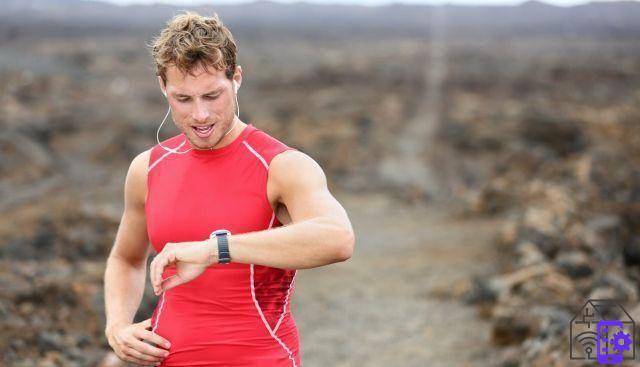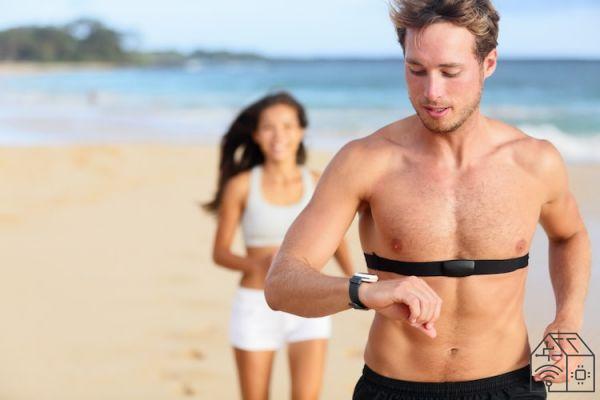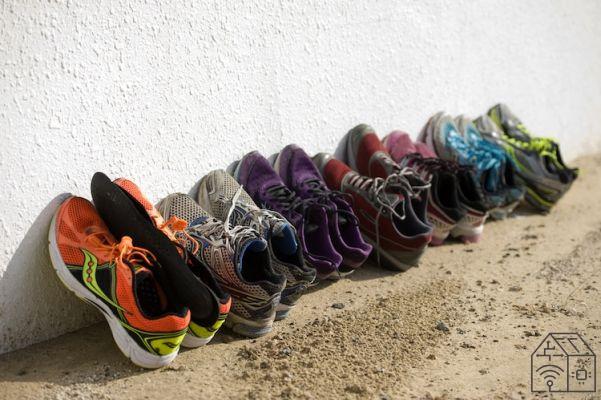
Running, as we know, is the most practiced and loved sport in the world.
More than knowing it, just look around. There is no way that is not assaulted by curious characters dressed in a bizarre way, who zigzag between vehicles and pedestrians, endangering their lives, in order not to disregard what is promised to their GPS watch or to their app.
There was talk of bizarre clothing. Why, let's face it, today even the most athletically modest runner has the opportunity to wear clothing and a range of gadgets that make him feel like a professional. Except in the step, but patience.
Rather: how have running accessories changed? How did you run in the past, when all the devilry that makes contemporary runners look like colorful and highly technological aliens were missing?
To do this, we divide the runner's paraphernalia for practicality into three categories: technological objects, shoes and clothing.
So let's find out, albeit with necessary conciseness, how running accessories have changed.

Running accessories: GPS and similar
How have actual running accessories changed, so everything is wearable technology?
Well, first of all, let's start with a simple consideration: once upon a time, runners wore no technology. And when you were training on the track (because who saw them, until a few decades ago, the runners on the street?) It was the coach who set the times, thanks to the legendary stopwatch secured around the neck by a cord.
The first pulse monitors were hideous and bulky contraptions secured to the chest by a couple of heavy rounds of scotch tape.
The turning point: GPS
To understand how running accessories have changed, we need to identify the main watershed date, the 1994, the year in which the GPS system was definitively perfected (actually born in 1973).
However, we point out that the two giants in the global production of running accessories, namely Polar and Garmin, were born before those dates: respectively in 1977 and 1989.
Ma it was in the mid-nineties that the running revolution broke out: Each runner can control distance and speed for himself, thanks to wrist watches that clip to the satellite. It goes without saying how much this invention has contributed to the boom in running, a sport that has been growing steadily for almost three decades.
More and more tech
Over the years there has been one race (to stay on the subject) to produce ever lighter, more sophisticated and more functional watches. Multisport watches are born, or models designed specifically for triathletes. The clocks of runners now calculate the calories burned, recovery times, indicate training programs that are remodeled according to the athlete's fatigue. Etcetera etcetera. All features that are also migrating to sports watches and apps.
The cardio bands are now very precise, hypoallergenic and stylish. And there is a large amount of other running accessories, from speed detectors to be applied to shoelaces, to products for stretching, self-massage and proprioceptive gymnastics. Not to mention the shoes.

Running shoes
An overview that illustrates how running accessories have changed without mentioning shoes is impossible. Which are basically the most essential accessories for running (even if the fanatics of barefoot running, that is, running barefoot, would disagree).
Here we can identify another pivotal date: 1977. When Nike puts Air technology on the market, which kicks off the production of hyper-cushioned shoes (which reach the running universe very soon).
For several years the competition was about who made the softest and most cushioned soles.
Until, and we are already in the new millennium, some important brands began to go against the trend, removing rubber from their soles and thinking that - perhaps - the less weight you lift with each step, the better. Here is how to step forward slowly phenomenon of so-called minimalism.
However, the latest trend, which has been talked about a lot in recent months, is to add carbon fiber inserts in the midsole of the shoes. The advantage of those who wear these shoes is such that many consider them ... doping. That is, capable of running beyond the real individual abilities.
The clothing
Even the runner's clothes are still accessories for running.
They are more than ever today, a time when they are produced shorts, tank tops and even socks in highly sophisticated technical materials. That is, able to prevent abrasions, guarantee maximum breathability and constant maintenance of the same body temperature in any climate. The cotton T-shirts that weighed three kilos after two laps of the block are just a faded memory.
 ALTRA Scarpe Lone Peak all-WTHR Low, Gray-Lime, US 9
ALTRA Scarpe Lone Peak all-WTHR Low, Gray-Lime, US 9
- Specific activity: Trail running
Towards a comfortable running?
In short: today runners have the opportunity to dress up with thousands of euros between shoes, clothing and various gadgets. They can run light as feathers even in January, monitor forty-nine body parameters and float on shoes as agile as flying carpets.
Thus arriving at forget the true beauty of running, which resides in the possibility (albeit through beautiful landscapes, and perhaps in the company of dear friends) to work hard, so much effort. Word of runner.




















![[Review] Samsung Powerbot VR7000: the robot vacuum cleaner from Star Wars](/images/posts/6bc44de38605b5c0fa12661febb1f8af-0.jpg)





